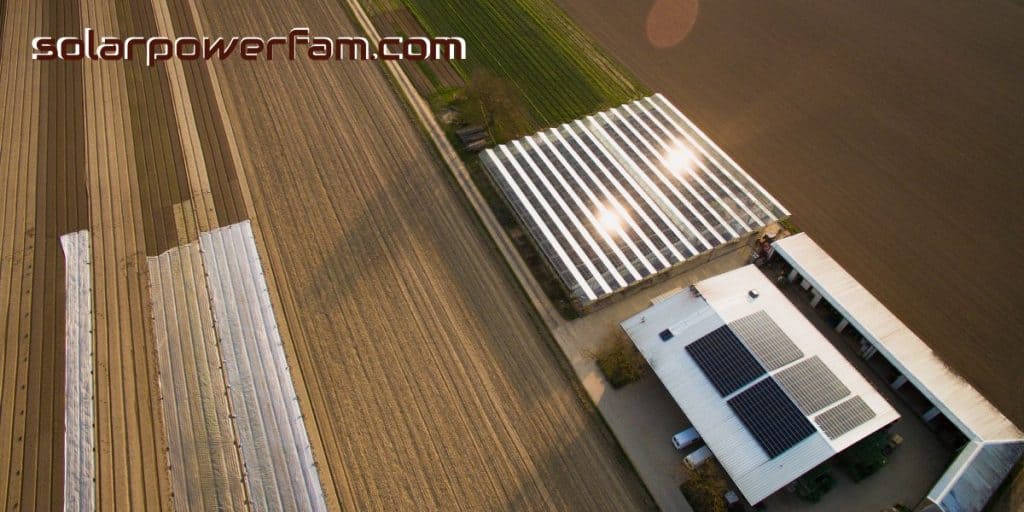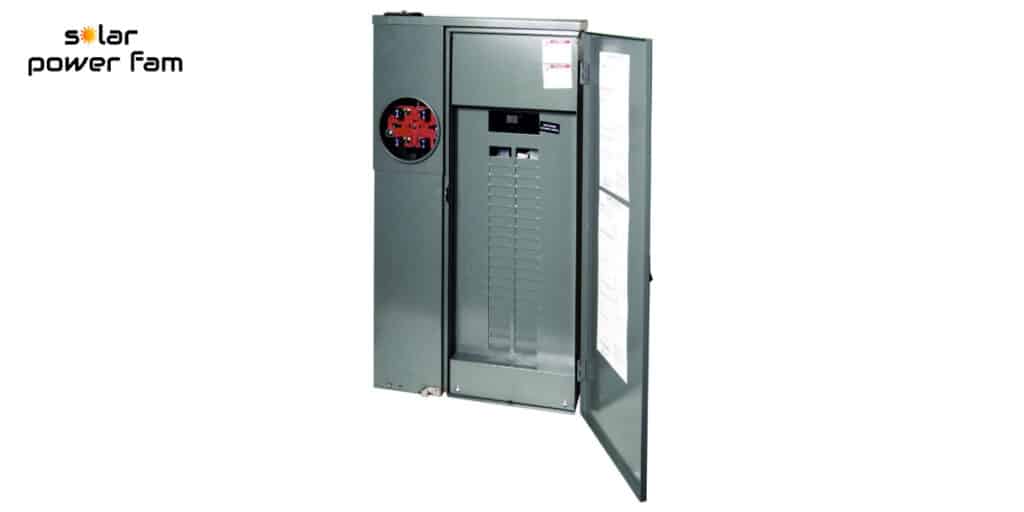The cost of solar panels per square meter may vary from $40 to $110 depending on variables like initial costs including financing, site resources & characteristics, annual energy production, annual cost and expenses. The cost of solar panel per square foot is is between $4 to $10.

Finding out the cost of a commodity before purchasing is very crucial. It is no different for solar panels. When sourcing the right solar panel, evaluate the solar panel’s cost and value by calculating the price per Watt and the Levelized cost of energy, otherwise known as (LCOE).
But you may ask how to do that, don’t worry; I’ll take you through a step by step guide on how to calculate the cost of solar panels per square meters, acres or feet. You can also calculate the best solar panel angle for you using our free online calculator.
Calculating the Cost of Solar Panels per Square Meter
Different individuals have different land ratios when it comes to the installation of solar. The prices will vary depending on the size of the solar panels required, the cost and the price per watt.

Let’s look at how to calculate the Price per Watt ($/W) for solar panels
Price per Watt ($/W) for Solar Panels
Here’s how much do solar panels cost for a 1,500 square foot house.
It’s noteworthy that solar energy is usually expressed in Kilowatts (kW) where 1000 watts = 1kW)
To calculate the price per watt, take the total cost of purchasing the solar, divide it by the number of watts produced by the same solar system.
This is what I mean;
Price per Watt ($/W) = cost of solar / number of watts.
For example, we are considering purchasing a 10kW solar system; this translates to 10,000 watts. The package price of the solar system is $30,000.
We need to calculate the $/W.
Our Formula is,
Price per Watt ($/W) = cost of solar / number of watts.
Therefore,
Price per Watt ($/W) = 30,000/10000 = $3 per watt
However, investments tax credit, also known as a solar tax credit, applies.
The investment tax credit is an incentive that lets one deduct a certain percentage, usually 26 percent, from the taxes.
In the example given above, incentive tax applies where the price of the solar was $30,000, after application of the incentive =26% x 30,000= $7,800
Therefore, 30,000-7800= $22,200.
Price per watt become=$22,200/ 10,000 = $2.22 per watt.
Please note other additional taxes may come in effect and further reduce the price per watt.
Calculating price per unit is essential because other than helping you find an excellent purchasing deal, it helps demystify any visual comparative advantage that one may encounter.
What do I mean by this?
Take, for instance, you walk into a shop and spot an 8kW solar system retailing at $20,000 and a 4kW solar system retailing at $10,000. Instantly you might ought for the 8kW one thinking that it has more power output.
Let’s try to find that out;
First solar system = $20,000/8000=$2.5.
Second solar system; =$10,000/4000=$2.5.
All the solar systems have same $/w regardless of the size of the solar system. Don’t go for the pricier or cheaper one. Go for what you need.
Cost of Solar Panels per Square Meter
A solar panel cost could range from $40 to $110 per square meter; this translates to $2 to $3 per Watt before tax.
| Expected Coverage Area Size (Square Feet) | Expected Coverage Area Size (Square Meter) | Estimated Cost in USD |
|---|---|---|
| 1000 | 92.903 | $4500 to $5500 |
| 2000 | 185.8061 | $9500 to $12000 |
| 3000 | 278.7091 | $14000 to $18000 |
| 4000 | 371.6122 | $21000 to $24000 |
| 5000 | 464.5152 | $26000 to $30000 |
Levelized Cost Of Energy (LCOE) Concept
Levelized Cost Of Energy (LCOE) is also referred to as Levelized Energy Cost (LEC). It measures the lifetime costs of a solar system divided by the total energy produced. It is important to understand the levelized cost of energy concept:
- LCOE Outlines the profitability of a project
LCOE calculations help contractors determine whether to go on with a project or not by determining the breakeven point. A project that doesn’t break even is not worth building.
- LCOE helps to determine the lifespan of a system
LCOE helps buyers and contractors to know the projected lifetime of a system before purchasing.
- LCOE helps in choosing the best form of energy to use
By evaluating a financial comparison of different forms of energy to use, such as wind, water, making it easier to select the best option.
- LCOE determines The total amount of electricity that will be produced
With LCOE, you can determine the amount of electricity that a system will produce throughout its lifetime.
You could use these easy and simple steps to calculate the LCOE:
Step 1: Calculate the net cost of the solar system
A system retailing at $50,000 costs about $37,000 after the Tax investments.
Step 2: Calculate the energy produced over the specified period
The system is estimated to produce 10,400kW per year.
Therefore, 10,400kW x 20 (specified year) = 208,000kW produced.
Step 3: Calculate the LCOE
Divide the net cost by the cost of energy produced.
LCOE = $37,000/ 208,000= 0.179 per kWh
Consider the following factors while calculating LCOE:
- The amount of sunlight that lands on the solar panel daily
- The efficiency of the solar
- The total net cost of the solar panel
- The annual degradation rate of solar
- Any performance benefit incentives
Where I live, the average sunshine received is 5.34kWh throughout the year. And I have a 10kW system costing $30,000 and a net cost of $22,200.
Here’s how I calculate the LCOE:
- Calculate the total solar energy produced in the specified time (including the annual daily sunshine and overall efficiency)
= 10kW * (5.34 x 365) annual sunshine * 20 years * 80% efficiency =311,856kWh.
- Cost of the system divided by the overall production
=$22,200/ 311,856=0.0711kWh , this could be expressed in percentage as 7kWh.
Alternatively, you could use software such as, Aurora to calculate the LCOE
LCOE = Lifetime cost of the solar system / Total energy produced.
The formula is;
The lifetime cost of solar system= C+ITC+M+P+PBI
Here,
c= cost
ITC= investment tax credit
M=maintenance
P= loan payment
PBI= performance benefit incentives
PBI is payments changed per unit of energy produced. An example is the solar Renewable Energy Credits in the USA and carbon credits.
Let’s consider this example:
A homeowner bought a solar system for cash $50,000 with an investment tax credit of $37,000. He spent $10,000 on maintenance, and the Performance benefit incentives are valid at $0.27. The solar system produces 10,400kW per year.
To find the LCOE, we do not have to worry about loan repayment since he bought it in cash.
C=$50,000
ITC=$37,000
M=$10,000
L=0
PBI=$21265
LCOE=($50,000+$37,000+$10,000+$21265) / 10,400×20 = 0.568
The sum of cost, investment tax credit, maintenance, loan payment and performance benefit incentives is divided by the expected number of years that the solar may last and expected energy production.
| System Size | 3 KW | 5 KW | 10 KW | ||||||
|---|---|---|---|---|---|---|---|---|---|
| $/Watt Price | $2.90 | $4.00 | $2.90 | $4.00 | $2.90 | $4.00 | |||
| Total Price | $8700 | $12000 | $14500 | $20000 | $29000 | $40000 | |||
| LCOE (Los Angeles) | $0.07 | $0.10 | $0.07 | $0.10 | $0.07 | $0.10 | |||
| LCOE (New York) | $0.09 | $0.13 | $0.09 | $0.13 | $0.09 | $0.13 | |||
I presume that most if not all of us using solar panel systems bought it once, perhaps many years ago. No one wishes to go back to the store every year to get new solar systems; it is very expensive.
A solar system is a device that may last long over 20 years. Like calculating the cost of solar panels per square meters, getting the right one to buy from the selection process is vital. This helps save on cost and also improves the lifetime of the system. I hope you will make informed decisions with the information shared here as you purchase a solar system.




